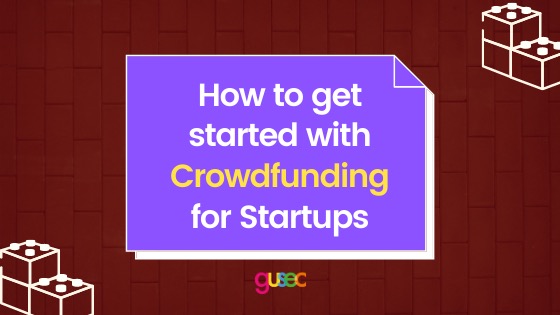How to get started with Crowdfunding for Startups

So, why go for crowdfunding and how exactly does one pull it off? To answer all your questions about the essentials of crowdfunding, what to expect before, during, and after a crowdfunding campaign, we had Bhavya & Aatur talk about their own crowdfunding experience in a recent session at GUSEC. This blog is a glimpse of their conversation with GUSEC Startup Founders: Amish Thaker, founder of Visity, Rutvij Dasania of Booz, Radhika Patel of Futuriztic, and our team member Keyur Punjani. where they talk about the do’s, don’ts, and everything else you need to know when deciding to go for crowdfunding to raise capital for your innovation.
WHY GO FOR CROWDFUNDING?
Crowdfunding not just validates your product, but also the market for it. It helps you gauge the interest of people in your product and how well your early product prototype works.
CROWDFUNDING ESSENTIALS
- Get out of the techie/engineer mindset and get into the consumer mindset. The sooner, the better.
- Go for fundraising at least 12 months in advance. This will prevent the pressure build-up to allocate funds in specific needs and will save you from doing the budget and salary cuts. Raising sufficient money insufficient time during your crowdfunding campaign is essential to achieve key milestones, and to ensure you have the upper hand.
- Know your target market and customers.
- Go for crowdfunding only when you have a stable prototype. This helps you have clarity with regards to the manufacturing material and processes you will go through post crowdfunding.
- Do not keep your product in the lab for too long. Product iteration is a continuous process. Get your product out in the market as soon as possible.
- Build a product that the consumer wants to see, not the one that you know how to make. Keep pivoting at small scales to optimise your product into one your consumers want.
- Master the art of quick decision making. Whether it is about product features or a launch date, take the decision and stick by it. If it’s wrong, you’ll learn from it, but in crowdfunding, as in business, learn to make swift decisions.
PRE-CROWDFUNDING
- Even before crowdfunding, you need initial funding to manufacture a working prototype of your product. Make sure to plan your crowdfunding campaign at least four months before you go for it.
- Have a good product, and a greater story still, one which can convince people to back your product. How well you tell your story and how far it reaches is imperative.
- For a good crowdfunding campaign, marketing, content, and PR is key, as they act as a good radio for your product and tell your story. Initially, it’s not the product you’re selling, but the story around it.
- While your early investors will only invest small amounts of money, they still take a risk with you, and it is important to convince them that you’re trustworthy, determined and will deliver the product in the given time.
- Make sure to hire a great team, people with the talent and mindset that you resonate with.
DURING CROWDFUNDING
Collect sign-ups on your website and other social media platforms. Connect and send emails to those who sign up and give them an early bird discount. If your campaign is successful in the first 24-48 hours, it has a snowballing effect in the sense that your crowdfunding platform (Kickstarter, Indiegogo, Patreon) sends out emails too, which leads to bloggers and journalists catching wind of your campaign and airing your story in the press or on the internet. This, in turn, generates leads and gets people to back up your product.
POST-CROWDFUNDING
Your prototype works well and you now have the capital to push your product into the manufacturing phase. What next?
When you move to the mass manufacturing of your product, the first thing you need is patience – and a lot of it. Things may get really complicated and challenging really soon. A product needs to go through many improvement processes before it reaches the consumers.
Make sure to take care of two key elements:
- Plan your logistics well in advance. Many times the experience of a user after the campaign is poor.
- Keep the supporters of your product engaged even after the crowdfunding campaign.
The post-crowdfunding challenges are endless. People may change addresses and you may have to ship your product to remote areas. If they face trouble receiving your product, they’re not going to feel very positive about it. Make sure that your early consumer has a seamless experience post-crowdfunding. This tremendously aids your business growth as these consumers act as ‘early evangelists’ who will not only give you invaluable feedback but also spread the word about your product.
WANNA KNOW MORE?
How do I take the help of consumers in building a great product and getting the word out for it?
How do I get investors and impress them?
What is the status of the Indian startup ecosystem with regards to crowdfunding?
How can I run a crowdfunding campaign in India?
How can startups in the hardware business leverage the lockdown period to their advantage?
For answers to these questions and more, watch the full video.




